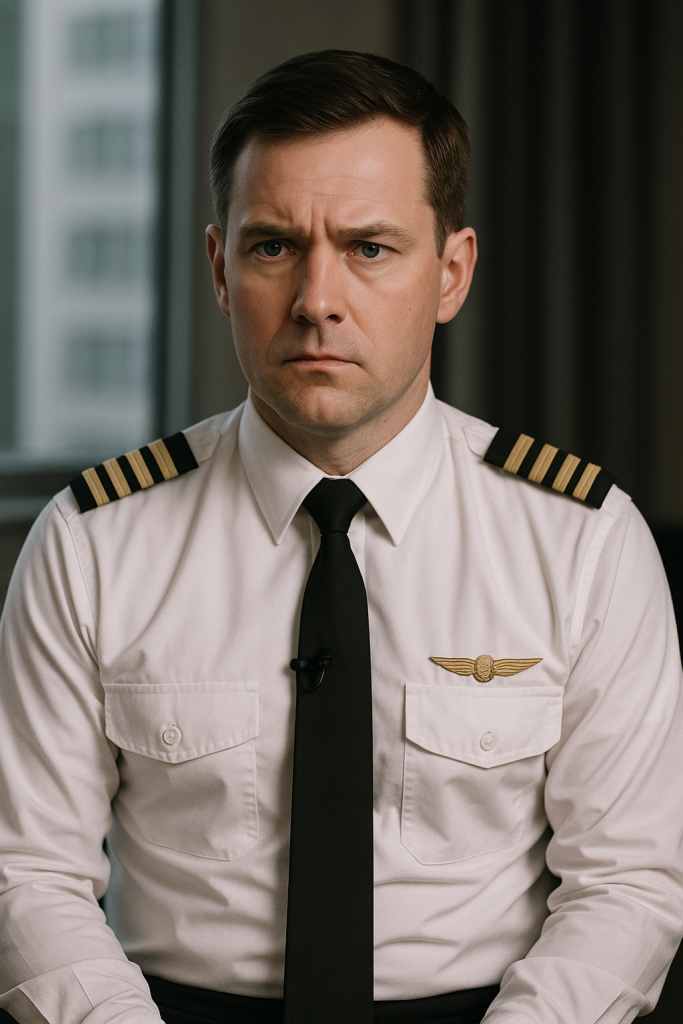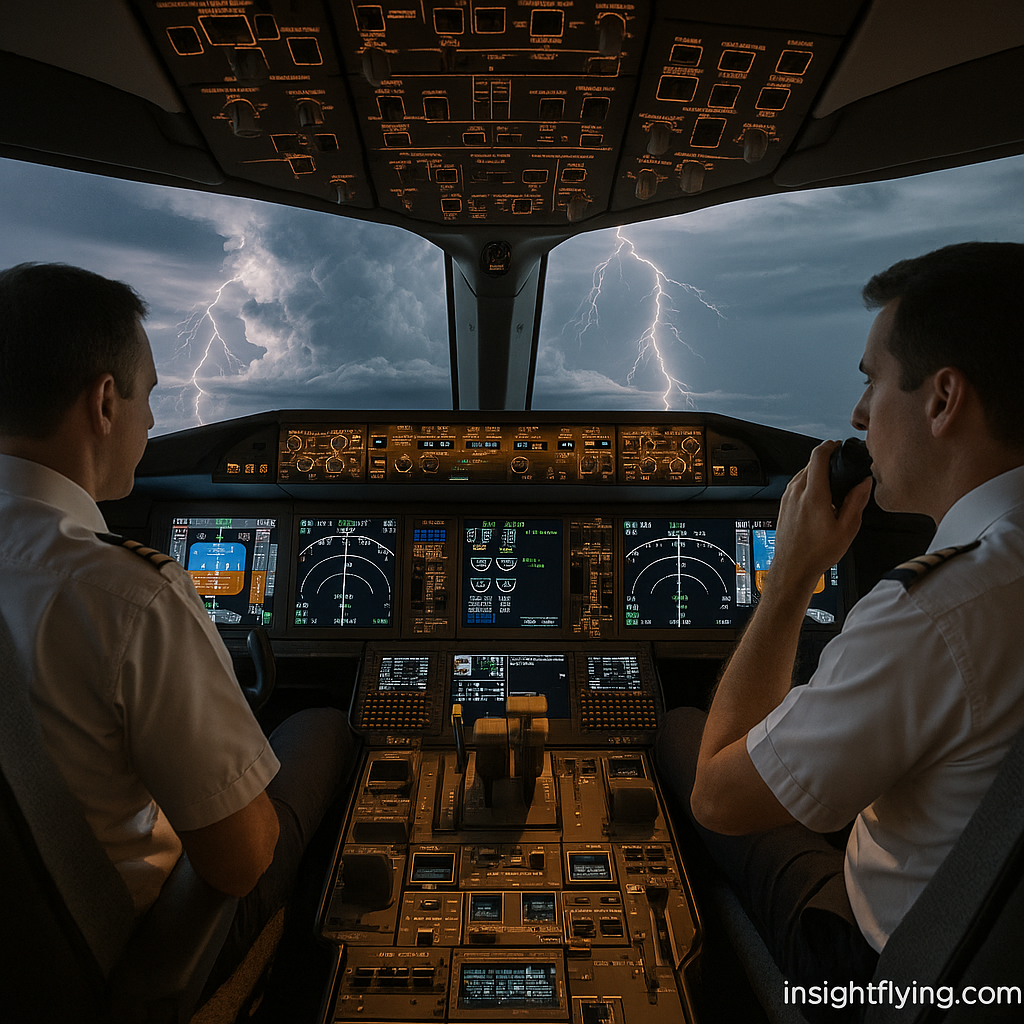ในวงการการบิน คำว่า “Type Rated” และ “Non-Type Rated” มักถูกใช้เพื่ออธิบายระดับคุณสมบัติของนักบิน ว่านักบินคนนั้นผ่านการฝึกอบรมเฉพาะสำหรับเครื่องบินประเภทใดแล้วหรือยัง ซึ่งเป็นเรื่องสำคัญมากต่อเส้นทางอาชีพ ต้นทุนการฝึก และโอกาสในการทำงานของนักบินแต่ละคน
มาดูกันให้ชัดว่าแตกต่างกันอย่างไร
1. Type Rating คืออะไร
Type Rating คือ การฝึกอบรมและคุณสมบัติเฉพาะสำหรับเครื่องบินชนิดหนึ่ง ๆ ที่ซับซ้อนเกินกว่ามาตรฐานใบอนุญาตนักบินทั่วไป
กล่าวคือ นักบินจะต้องผ่านการฝึกอบรมภาคพื้น (Ground School) และฝึกในเครื่องจำลองการบิน (Simulator) สำหรับเครื่องบินชนิดนั้น ๆ รวมถึงต้องสอบ Proficiency Check กับผู้ตรวจสอบที่ได้รับอนุญาต
ตัวอย่างเช่น
- Boeing 737 → Type Rating: B737
- Airbus A320 → Type Rating: A320
- Gulfstream G650 → Type Rating: G650
เมื่อผ่านแล้ว ใบอนุญาตนักบิน (Pilot License) จะระบุชื่อเครื่องบินชนิดนั้นไว้โดยเฉพาะ
2. กรณีที่ต้องมี Type Rating
หน่วยงานกำกับการบิน (เช่น EASA, FAA หรือ CAAT) กำหนดให้นักบินต้องมี Type Rating สำหรับเครื่องบินที่
- มีระบบซับซ้อน (Complex Aircraft Systems)
- มีน้ำหนักวิ่งขึ้นสูงสุด (Maximum Takeoff Weight) มากกว่า 5,700 กิโลกรัม
- หรือเป็นเครื่องบินเจ็ตที่ต้องใช้ทักษะการควบคุมเฉพาะ
ดังนั้น การบินเครื่องบินขนาดเล็กอย่าง Cessna ไม่จำเป็นต้องมี Type Rating
แต่การบินเครื่องบินโดยสารอย่าง Airbus หรือ Boeing จำเป็นต้องมีแน่นอน
3. Non-Type Rated คืออะไร
Non-Type Rated Pilot หมายถึง นักบินที่มีใบอนุญาตนักบิน (เช่น CPL หรือ ATPL) แต่ยังไม่ได้รับการฝึกอบรมสำหรับเครื่องบินชนิดเฉพาะใด ๆ
นักบินกลุ่มนี้มักมีประสบการณ์บินเครื่องบินขนาดเล็ก หรือเครื่องบินที่ใช้เพียง Class Rating เช่น
- Single Engine Piston (SEP)
- Multi Engine Piston (MEP)
- Multi Engine Turboprop (MET)
พวกเขาสามารถสมัครเข้าทำงานกับสายการบินหรือบริษัทที่มีการฝึกอบรม Type Rating ให้ภายหลังการคัดเลือก
หรือบางคนเลือกที่จะ ลงทุนเรียน Type Rating ด้วยตนเอง เพื่อเพิ่มโอกาสในการได้งานกับสายการบินเฉพาะเครื่อง
4. การรับสมัครของสายการบิน: Type Rated vs Non-Type Rated
สายการบินบางแห่งระบุชัดว่าเปิดรับเฉพาะนักบินที่ มี Type Rating แล้วเท่านั้น
ขณะที่บางแห่งเปิดรับ Non-Type Rated เพื่อฝึกเพิ่มเติมภายหลังการคัดเลือก
- Type Rated Candidate
✅ พร้อมบินได้ทันทีหลังจบ Line Training
❌ ต้องลงทุนค่าเรียนสูง (มักเป็นการเรียนด้วยตนเองก่อนสมัครงาน) - Non-Type Rated Candidate
✅ สายการบินบางแห่งจัดฝึกอบรม Type Rating ให้
❌ ต้องใช้เวลาเพิ่มก่อนเข้าสู่การบินปฏิบัติการจริง
บางสายการบินมีโปรแกรมฝึกอบรมแบบ Cadet Program หรือ Ab-Initio Program ที่ฝึกตั้งแต่ระดับพื้นฐานจนถึง Type Rating ครบวงจร
ลดล้างสต๊อคหนังสือ A Pilot Book “20,000 Hours” สนใจทักไลน์แอด
👉 Line id @qgm0886l กดแอดไลน์ที่นี่ https://lin.ee/m1WFkdSr
หรือผ่านเพจ https://www.facebook.com/apilotclub
5. ค่าใช้จ่ายและภาระการฝึก
การฝึก Type Rating มีค่าใช้จ่ายสูงและใช้เวลาฝึกเข้มข้น โดยทั่วไปอยู่ระหว่าง
20,000 – 40,000 เหรียญสหรัฐ (USD) ขึ้นอยู่กับชนิดของเครื่องบินและศูนย์ฝึก
นักบินบางคนจึงเลือกหางานก่อน เพื่อให้สายการบินเป็นผู้สนับสนุนค่าใช้จ่าย
ขณะที่บางคนตัดสินใจ ลงทุนเองล่วงหน้า เพื่อเปิดโอกาสการสมัครงานกับสายการบินต่าง ๆ ได้กว้างขึ้น
6. มุมมองด้านอาชีพ
- Type Rated Pilots
มักมีโอกาสเข้าทำงานได้เร็วกว่า โดยเฉพาะกับสายการบินที่ใช้เครื่องรุ่นเดียวกับที่ตนได้รับ Type Rating - Non-Type Rated Pilots
มีความยืดหยุ่นในการเลือกสายการบินและเส้นทางอาชีพ แต่ต้องใช้เวลาและการแข่งขันสูงกว่าในช่วงแรก
สุดท้ายแล้ว ทั้งสองเส้นทางต่างสามารถนำไปสู่เป้าหมายเดียวกันได้ — คือการเป็น นักบินสายการบินมืออาชีพ
ตารางเปรียบเทียบ
| หัวข้อ | Type Rated Pilot | Non-Type Rated Pilot |
|---|---|---|
| คุณสมบัติ | ผ่านการฝึกอบรมเฉพาะเครื่องบินรุ่นใดรุ่นหนึ่ง (เช่น A320, B737) | มีใบอนุญาตทั่วไป ยังไม่มี Type Rating เฉพาะรุ่น |
| การฝึกอบรม | มีการเรียน Ground School และ Simulator สำหรับรุ่นนั้น ๆ | ฝึกเฉพาะ Class Rating (SEP, MEP ฯลฯ) |
| ความพร้อมในการทำงาน | พร้อมบินได้ทันทีในรุ่นนั้น | ต้องเข้ารับการฝึก Type Rating ก่อน |
| ค่าใช้จ่าย | สูง (เรียนเองหรือสายการบินสนับสนุน) | ต่ำกว่า แต่ต้องลงทุนเพิ่มภายหลัง |
| งานที่พบบ่อย | Airline Pilot, Corporate Jet Pilot | Cadet, Flight Instructor, Trainee |
บทสรุป
ไม่ว่าจะเป็น Type Rated หรือ Non-Type Rated สิ่งที่สำคัญที่สุดคือ
ความสามารถ (Competence)
ทัศนคติ (Attitude)
และ การเรียนรู้อย่างต่อเนื่อง (Continuous Learning)
นักบินทุกคนเริ่มต้นจากการเป็น Non-Type Rated ทั้งนั้น
และทุก Type Rating ที่เพิ่มขึ้น คืออีกหนึ่ง “ขั้นของความเชี่ยวชาญ” และ “ความภาคภูมิใจในวิชาชีพนักบิน”

Type Rated vs Non-Type Rated Pilots: What’s the Difference?
In the aviation world, you may often hear pilots refer to themselves as “type rated” or “non-type rated.” These terms describe the level of aircraft qualification a pilot holds — and they make a big difference in a pilot’s career path, training cost, and job opportunities.
Let’s take a closer look.
1. What Is a Type Rating?
A type rating is a specific qualification that allows a pilot to operate a particular type of aircraft — usually large, complex, or jet-powered.
Each type of aircraft that requires additional training and examination (beyond the standard pilot license) is listed by its own designation in the pilot’s license.
For example:
- Boeing 737 → Type Rating: B737
- Airbus A320 → Type Rating: A320
- Gulfstream G650 → Type Rating: G650
To earn a type rating, a pilot must undergo specialized ground school and simulator training, followed by a proficiency check conducted by an authorized examiner.
2. When Is a Type Rating Required?
A type rating is required by aviation authorities (like EASA, FAA, or CAAT) when an aircraft:
- Has complex systems (e.g., multi-engine jet aircraft)
- Exceeds a certain maximum takeoff weight (usually above 5,700 kg)
- Requires specific handling skills or advanced automation knowledge
In other words, flying a small single-engine Cessna does not require a type rating — but flying an Airbus or Boeing does.
3. What Is a Non-Type Rated Pilot?
A non-type rated pilot is someone who holds a pilot license (for example, CPL or ATPL) but has not yet completed training for a specific aircraft type.
These pilots may have experience flying general aviation or smaller aircraft that are covered by a class rating — such as:
- Single Engine Piston (SEP)
- Multi Engine Piston (MEP)
- Multi Engine Turboprop (MET)
They can apply for airline or charter positions that offer type rating training upon employment, or they can self-fund a type rating to become qualified for a specific aircraft type.
4. Airline Recruitment: Type Rated vs Non-Type Rated
Airlines sometimes specify whether they accept non-type rated applicants or only type rated ones.
- Type Rated Candidates:
Already trained and qualified to fly the specific aircraft (e.g., B737, A320).
✅ Ready to fly immediately after line training.
❌ Higher training cost (usually self-sponsored before employment). - Non-Type Rated Candidates:
Do not yet have a rating for the aircraft type.
✅ Airlines may provide type rating training after selection.
❌ Require additional time before operational flying begins.
Some airlines offer “Cadet” or “Ab-Initio” programs where non-type rated pilots receive full training from basic flight school up to type rating level.
5. Cost and Commitment
Type rating courses are intensive and expensive, often ranging between USD 20,000 – 40,000, depending on the aircraft type and training provider.
Therefore, some pilots prefer to gain employment first and let the airline sponsor their type rating — while others self-fund it to gain an advantage in job applications.
6. Career Perspective
- Type Rated Pilots generally have more immediate job opportunities with airlines that operate the aircraft they’re rated on.
- Non-Type Rated Pilots have more flexibility to choose which path or airline they wish to pursue, but may face more competition initially.
Both paths can lead to the same goal — becoming a professional airline pilot — but the journey, cost, and opportunities can differ significantly.
Summary
| Aspect | Type Rated Pilot | Non-Type Rated Pilot |
|---|---|---|
| Qualification | Holds rating for a specific aircraft type (e.g., A320, B737) | Holds general license, no specific aircraft type rating |
| Training | Completed simulator and ground training for that type | May only have class ratings (SEP, MEP, etc.) |
| Job Readiness | Ready to fly the type immediately | Needs type rating training before line flying |
| Cost | Higher upfront cost (self or sponsored) | Lower initial cost but needs investment later |
| Common Roles | Airline Pilot, Corporate Jet Pilot | Cadet, Flight Instructor, or trainee pilot |
Final Thoughts
Whether you are type rated or non-type rated, what truly matters is competence, attitude, and continuous learning.
Every pilot begins their journey as non-type rated — and each new aircraft type represents a step forward in knowledge, skill, and professionalism.
